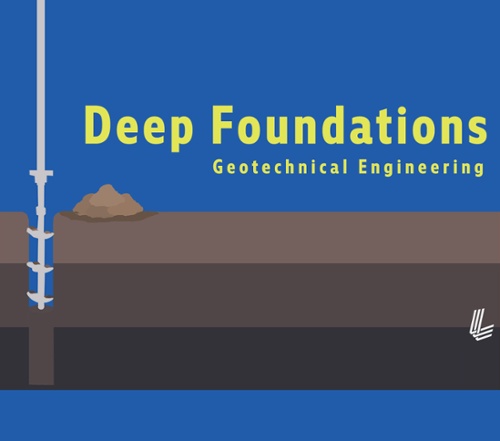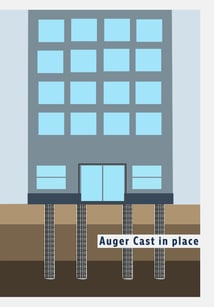Search for topics or resources
Enter your search below and hit enter or click the search icon.
Are you interested in Building Better with Legacy Engineering? We're Hiring!

Deep foundations are ones in which the depth from the ground surface to the underside of the foundation is more than five times the width of the foundation and are a critical component of geotechnical engineering.
While Legacy does not drill deep foundations, our engineers are qualified to recommend them if needed.
Substandard soil conditions pose a significant obstacle when building foundations beneath the surface will create a more stable foundation for your building.
While not required for all subject sites and structures, deep foundations are recommended by our geotechnical engineers if the existing subsurface conditions are unfavorable to the design loads given by the civil engineer designing the structure. Deep foundations are highly recommended if the top ten feet of soil are problematic.
Because deep foundations can reach 40 feet below the surface, they are an optimum solution for a stronger foundation beneath your structure and a cost-efficient option as opposed to excavating bad soil.
For example, if you are building a beach home, the top layer of sand is not ideal for building on top of, and deep foundations should be dug to avoid the loss of foundation strength due to scour stripping away soil layers. The reasoning behind the layer of sand not being ideal due to storm scour. Because a hurricane or storm washes away sand, it Is unusable and therefore unable to be built upon.
Depending on the soil and location, our engineers will recommend either an Auger Cast in place (ACIP) or Helical piles. While both methods provide structural support, both methods have different characteristics.

ACIP is a quiet process, can hold more load than Helical piers, and has a higher tension capacity but the drilled-out soil must be disposed of.

As for Helical piles, there is no excess waste, piers can be added to existing structures, and it requires less equipment, but is used for loads no heavier than 40-50 kips.
Our trusted geotechnical engineers will analyze your subsurface conditions to provide the most accurate and suitable recommendations.
Topics: